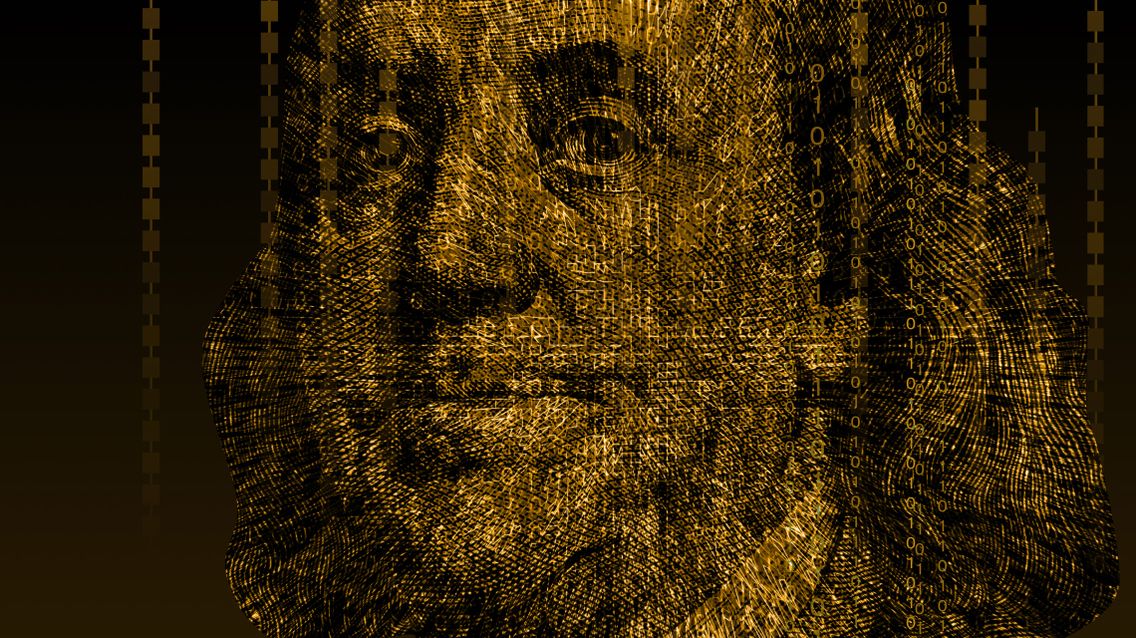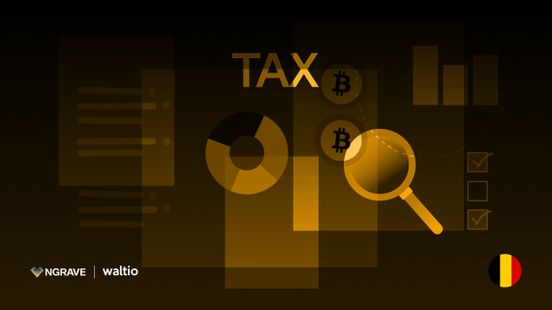

What is a CBDC & should we be scared?
Though CBDCs promise some clear benefits - simplifying the financial interaction with the government - they threaten a new form of information tyranny, described as surveillance money.
- Article Quick Links:
- What is a CBDC?
- How does a CBDC work?
- CBDCs - The Good
- CBDCs - The Bad
- CBDCs - The Ugly
If you ask crypto advocates what they think the greatest risk to adoption is, your bingo card would probably include things like quantum computing, regulation, outright bans & concerns about environmental impact. A less popular option is that central banks read the room and make government money more like crypto. Well something like that is happening with Central Bank Digital Currencies, but rather than adopting all the useful aspects of crypto, they are cherry-picking those elements that might reinforce control and further erode privacy. So what exactly is a CBDC and how scared should we be?
Debate around the future of money is fierce and tribal, but one thing that everyone should be able to agree on is that money evolves. If not, we would still be using animal pelts, coconuts or glass beads as money.
Money evolves because it is just a means to an end, a socially agreed construct to allow us to move our energy around in space and time.
Right now we still largely agree that default money is the one created by our government, but a significant alternative began to emerge after the publication of the Bitcoin Whitepaper in October 2008.
Governments and central bankers were initially dismissive, but Bitcoin, and the host of cryptocurrencies it inspired, refused to go away, delivering on the promise of new ways of exchanging value:
- No central authority
- Rule based monetary policy
- Settlement finality
- Permissionless, borderless & censorship resistant
Though governments were slow to acknowledge the threat from crypto, they haven’t totally dismissed them, but instead, have the are cherry-picking elements that they might use to defend their monopoly over money creation.
The result is the Central Bank Digital Currency, or CBDC for short.
What is a CBDC?
A CBDC can be described as an entirely digital form of an existing national currency. The emphasis is on the word entirely, because in reality national currencies - aka fiat money - are already predominantly digital.

Depending on which study you cite, about 97% of money in circulation - narrow money - exists simply as records on a central bank database, with only the remaining 3% in physical form as notes and coins, which is set to decline further.
Given that the notes and coins are simply representative money - the paper or metal alloys do not equate to the value they represent - it doesn’t really matter whether money is bytes or bills, because in both cases it has no intrinsic value. Its value stems from trust in the power and authority of the government behind it.
And though one of Bitcoin’s main USPs is its finite supply - ticking the scarcity box for sound money - there is no intention for CBDCs to return to a gold standard or similar.
In that sense an eDollar or a BritCoin will be no different to the existing form, instead governments and central banks are cherry-picking elements of cryptocurrency technology that suit their economic and political agendas to change the way money is managed.
That means that there will be good, bad and ugly aspects of CBDCs to weigh up, but first let’s look at how a CBDC might work.
How does a CBDC work?
It is difficult to explain how a CBDC might work without first explaining both how the existing fiat money system works, as well as describing the elements of cryptocurrency that a Central Bank Digital Currency borrows.
Each subject is given full attention in the NGRAVE Academy, so we’re going to simply provide a basic summary, but if you’re left scratching your head, take the time to get the whole back story.
Putting the issue of scarcity to one side, central bank-issued money relies on a system of intermediaries (banks) to provide liquidity for commercial activity and to execute the financial support (civil service) that the government provides for society in the form of various state benefits and services.
At the same time money has to flow back to the government, through taxes and levies, which are used to finance its functions, which again relies on intermediaries.
If you want to send money to someone who’s government runs a different currency system, you’ll also need a bunch of intermediaries to make that work, which involves time and fees.
This system is riddled with inefficiency, on both a national and international level, because all the intermediary layers make it impossible to have a holistic view of what is going on, and because the systems have been laid down over time - like sedimentary rock - with different technologies and standards creating massive legacy issues. The need for mediation also raises the cost of transaction, making micro-transfers uneconomical.
How a CBDC works is replacing that cumbersome, layered financial bureaucracy with a ledger-based system of managing money, inspired by cryptocurrency, which can connect all levels of the financial system right down to the individual citizen holding a supported digital wallet.
Cryptocurrencies are built on ledgers that are transparent - anyone with a browser can access any transaction.
They are also permissionless - anyone, anywhere can participate by running a Node - and censorship-resistant - because the Node system, and economic incentives, discourage centralisation, while making it difficult for any one entity to exert control over the rules of the system.
Governments certainly want to stay in control, and are equally unwilling to suddenly open their books to anyone with an internet connection, so they’re interested in the improvements blockchain ledgers provide in transferring value, but in a permissioned, rather than permissionless way.

So given the need to solve the problem of excessive intermediaries, but using a permissioned, rather than permissionless access, a high level a CBDC might work in one of three ways. Each of which would have quite considerable implications for how the financial system would work around it:
- Remove the intermediaries - In this model a CBDC uses a permissioned ledger to connect directly to citizens and businesses who hold CBDC accounts and interface via sanctioned wallets.
- Retain intermediaries - Retain some of the existing logic of the current banking system but in a streamlined way using a single CBDC ledger to improve the flow of liquidity from government-to-banks and then banks-to-customers.
- A hybrid system - Businesses and individuals hold digital currencies that are direct claims on the Central Bank ledger, but banks add value by providing intermediary payment layers.
CBDCs - The Good
Regardless of which of these three flavours of CBDC might be implemented, the obvious benefit is the efficiency with which money could be moved by any participant in the system, in terms of time and cost.
Taking the relief efforts of the US government to the Covid Pandemic as just one example, a significant proportion of the three rounds of stimulus payments provided to individuals were physically posted as checks. Hard to believe in a digital age that such a slow and labour intensive system was the best option.
Even where payments were made as direct deposit, there was a multitude of reasons why that was slowed down, such as information held by the IRS being inaccurate or outdated.
Some citizens simply lacked a bank account for the relief to be paid into, so pre-paid cards were provided instead, which required further intermediation and fees.
Even the process of deciding who would receive the financial aid was absurdly complex as it required information from tax submissions to judge eligibility.
A properly functioning CBDC might enable a much simpler and cheaper way of providing financial benefits, with the ability to support micro-transactions - greater for developing economies.
Equally, it could simplify the processing of tax payments, which can be one of the most painful and labour intensive aspects of civil governance, because the government or licensed intermediaries would have a bird’s eye view of the flow of your finances.
That transparency may also be able to cut down on tax evasion, which is clearly an issue for indebted governments as illustrated by the announcement in July 2021 by the OECD that 130 countries and jurisdictions, representing 90% of global GDP, would be harmonising their tax laws to ensure multinationals pay a fairer share of profits wherever they operate.
CBDCs - The Bad
Unfortunately, the ease with which a digital currency might flow between governments and citizens, through a central bank ledger, and the visibility this gives of the purposes to which it is being put, have some very sinister implications.
If you are using a sanctioned CBDC wallet, your balance is an entry on a ledger that isn’t censorship-resistant, because access is permissioned. In other words, it's controlled by the central bank, who will give access to certain privileged parties. The central bank can add to that balance - if you are due a benefit - but it could equally take away instantly.
Your taxes could be deducted by default, leaving you having to argue against any miscalculations in retrospect. Speeding or parking fines, service fees to your local council, could all be dedicated at the source, without warning.
Bail-Ins
That might not sound so bad, but the next time there is a financial crisis, we could be seeing bail-ins, rather than bail-outs. In 2008 most governments bailed out banks by creating liquidity and taking on bad debt; the wider public paid for this indirectly through taxes and austerity.
In Cyprus, they simply confiscated funds from those with bank balances over €100,000 this was nicknamed a ‘bail in’ and many commentators believe that CBDCs could usher in this approach, simply because the opportunity is too tempting.
“The move was a condition sought by international creditors for a 10 billion euro ($11.62 billion) bailout to the east Mediterranean island. At Laiki Bank alone, about 3.4 billion euros in deposits were wiped out. This left savers with at most 100,000 euros, the ceiling on deposit insurance under EU regulations.
Bank of Cyprus clients saw a percentage of their deposits exceeding 100,000 euros converted to equity, exchanging the seized funds for shares in the lender.” Reuters, 2013
The precedent for a ‘bail-in’ rescue of public finances was set by US President, Franklin D Roosevelt, in 1933, as part of the response to the Great Depression. United States Executive Order 6102 forbade ‘the hoarding of gold coin, gold bullion, and gold certificates within the continental United States.’
In practice it meant that the majority of privately held gold had to be sold to the government at $20.67; the dollar was then devalued relative to gold, pushing its price to $35. Failure to comply could have landed you with a 10-year prison sentence.
Surveillance Money
Alongside the threat of arbitrary confiscation are the privacy concerns that have led some to describe CBDCs as surveillance money, money that cannot exist outside the knowledge of a central bank.
On-chain analysis is a huge and growing part of the crypto ecosystem, combining transaction patterns with address history and unspent value, used by traders to predict future price movement, or as a service to authorities and businesses to detect criminal activity and compliance issues.
Despite transactions carrying no personal detail, a lot of information can be inferred from publicly identified addresses, address labelling and data science techniques.
This is a direct quote from a BIS Working Paper:
“Of course, technical design alone may not be sufficient to counter concerns that public authorities (central banks and other government institutions) would use CBDC systems as an instrument for state surveillance and control. It is easy to imagine how sensitive transactions data could allow authorities to track individuals, and to block their access to CBDC payments.”
Taking a similar approach, a CBDC would open up a Pandora’s Box of opportunity for governments to not only analyse in great detail what we spend our money on, and how often, but to potentially sanction activities that it considers are harmful or against the public good.
The range of activities that might be monitored could range from fast food to gambling or smoking, while any funds that you may have legitimately received, but are deemed to have some illegal origin, could be blacklisted, knocking fungibility off the list of sound money ideals.
The irony is that if cash were invented today, it would be banned tomorrow, simply because its anonymity fuels crime, more so than any other form of money - crypto included.

CBDCs - The Ugly
How CBDCs might play out is largely conjecture, and in most countries surveillance concerns would come up against constitutional rights, but it shouldn’t be dismissed as implausible, because it is already happening.
In a January 2021 survey by the BIS (Bank for International Settlements) of 65 countries, almost 90% had conducted research into CBDCs, with the People Bank of China the furthest down the road to a functioning national digital currency - the eCNY.
In 2021 the PBOC dispersed the equivalent of $6.2million in a lottery system with ‘red parcels’ of 200 eCNY allocated at random from those downloading a trial eCNY wallet, connected to a CBDC ledger. There are suggestions that the eCNY will see a wider trial as part of the build-up to the Winter Olympics in Beijing (February 2022).
The whitepaper for the eCNY makes it clear that it will initially coexist with cash, but the intention is clear. For a government that already controls access to information (the Great Firewall), a CBDC provides the potential to control what people do with their money.
One particular area of focus is stopping capital flight - the movement of money outside of China - which represents a threat to state control. In fact, China’s rush to create a CBDC can be interpreted as part of a wider attempt to undermine the US Dollar as the global reserve currency.
Among the potential benefits of CBDCs is the improvement in the speed and ease of cross-border payments. This will require cooperation on standards to enable interoperability, with suggestions from the BIS of global CBDC platform, which national CDBCs plug into.
China will soon be the world’s biggest consumer market, so they have plenty of power to persuade other countries to work with the eCNY and whatever CBDC standards they arrive at.
If that isn’t incentive enough, their Belt and Road Policy focused on strategic infrastructure projects, could provide further impetus to financial harmonisation.
CBDCs are therefore likely to be key features of the growing currency wars being fought by the world’s major powers, trying to compete to become the dominant digital currency. That competition includes Stablecoins and cryptocurrencies, which may have had a head-start, but given the tremendous advantage that the state has in creating adoption, they can quickly make up ground.
The race is on to digitise national currencies through CBDCs and not only counter the threat of crypto but stake a claim on territory in tomorrow’s currency wars.
Article Quick Links:
- What is a CBDC?
- How does a CBDC work?
- CBDCs - The Good
- CBDCs - The Bad
- CBDCs - The Ugly

Ruben is a repeat tech entrepreneur. His focus is on digital asset security and financial empowerment. He is co-founder and CEO of NGRAVE, the creator of “ZERO” - the world’s most secure hardware wallet for crypto storage. In 2021, he was selected for Belgium’s 40 under 40. Before that, he was a finalist in scale-ups.eu’s Disruptive Innovator of the Year 2020 Award, and nominated in Google/PWC/Trends’ Digital Pioneer 2020.

